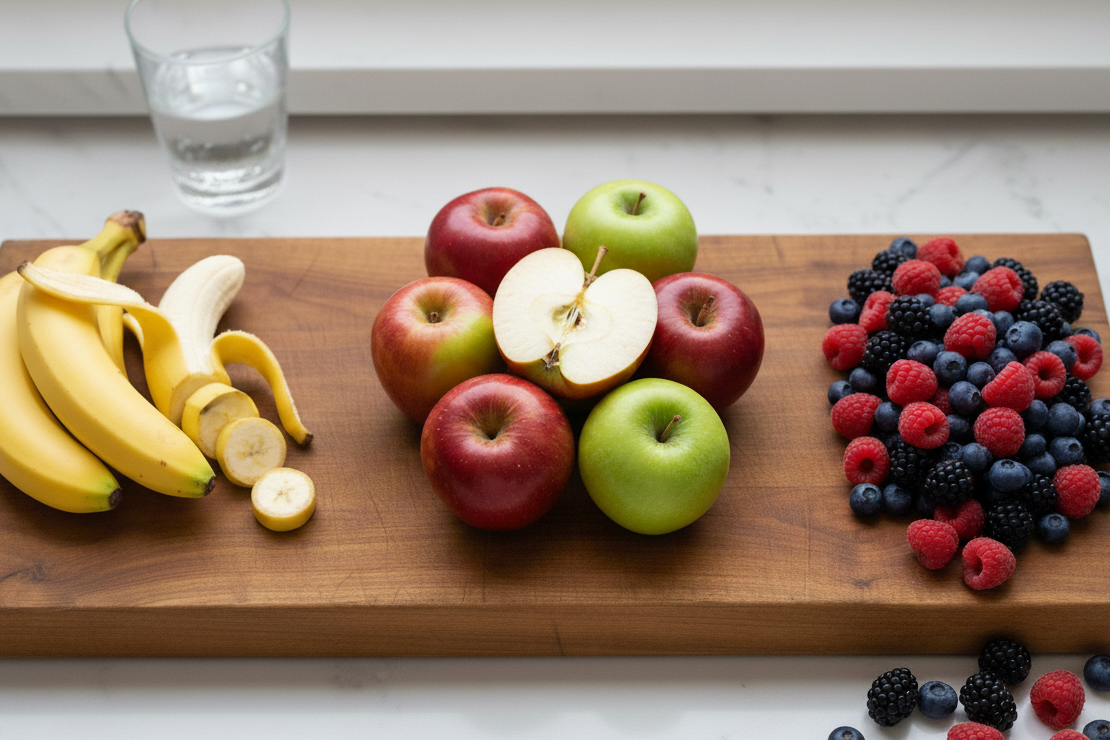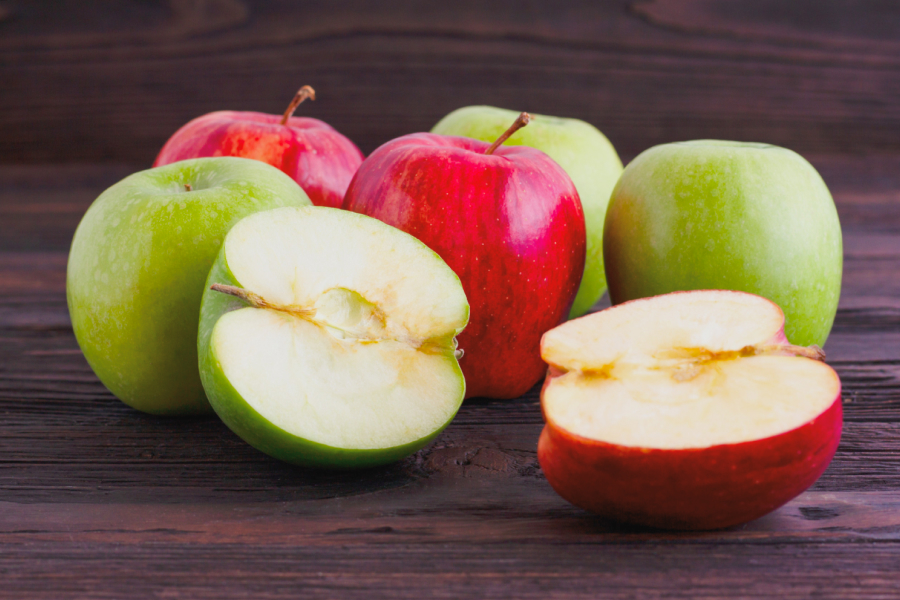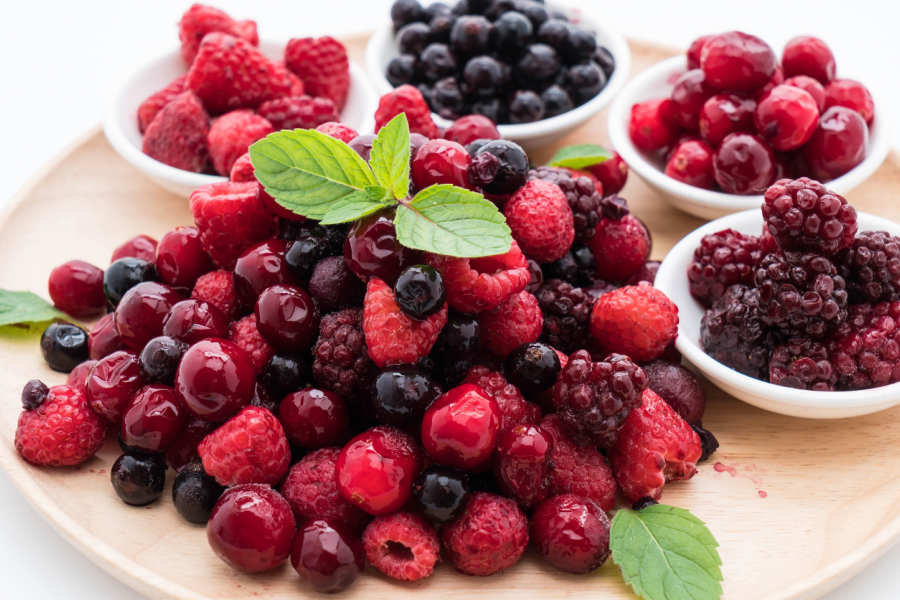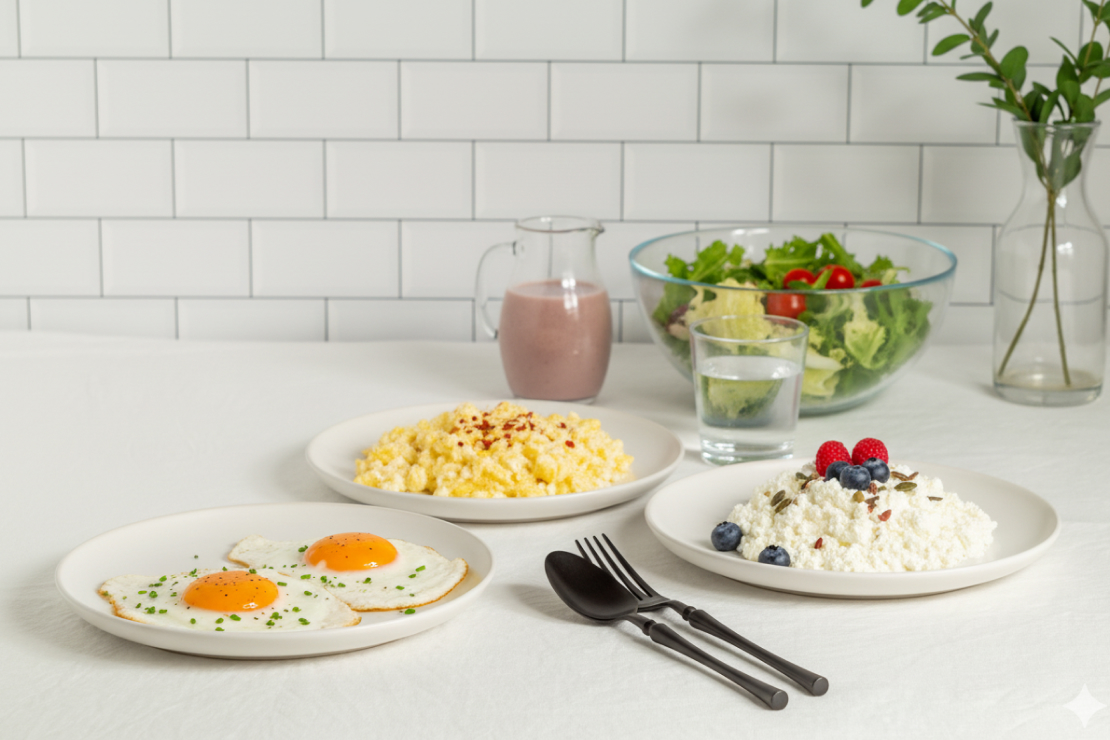Banana vs. Apple vs. Berries: The Smartest Fruit Choice for Stable Energy & Fat Loss.
Choosing the right fruit can significantly impact your energy levels and fat loss journey. This article compares bananas, apples, and mixed berries to help you make the smartest choice for your health goals, supported by Macro Tracking AI insights.

Table of Content
Introduction
Fruits are a cornerstone of a healthy diet, providing essential vitamins, minerals, and fiber. But when it comes to optimizing for stable energy levels and effective fat loss, not all fruits are created equal. The choices we make can significantly impact our blood sugar, satiety, and overall progress towards our health goals.
In this comprehensive guide, we'll put three popular fruit categories head-to-head: bananas, apples, and mixed berries. We'll delve into their unique nutritional profiles, explore their glycemic impact, and uncover how each can best serve your quest for sustained energy and a leaner physique. Understanding these differences is crucial for making informed dietary decisions that align with your personal health objectives.
To truly master your fruit intake and ensure it supports your energy and fat loss goals, our Macro Tracking AI app is your ultimate companion. With features like Calorie Tracking, Macro Tracking, and Personalized Goals, it helps you precisely monitor your fruit consumption, understand its impact on your daily macros, and make smarter choices for stable energy and effective weight management.
Comparison Overview
| Nutrient (per 100g raw) | Banana (Medium) | Apple (with skin) | Mixed Berries (e.g., Blueberries, Raspberries) |
|---|---|---|---|
| Calories | 89 kcal | 52 kcal | 57 kcal |
| Carbohydrates | 22.8 g | 13.8 g | 14.5 g |
| Fiber | 2.6 g | 2.4 g | 6.5 g |
| Sugars | 12.2 g | 10.4 g | 7.3 g |
| Glycemic Index (GI) | 51 (Medium) | 36 (Low) | 25-49 (Low) |
| Vitamin C | 8.7 mg | 4.6 mg | 9.7 mg (Blueberries) / 26.2 mg (Raspberries) |
| Potassium | 358 mg | 107 mg | 77 mg (Blueberries) / 151 mg (Raspberries) |
Evaluation Criteria
- Glycemic Impact: How quickly the fruit raises blood sugar levels.
- Fiber Content: Contribution to satiety and digestive health.
- Nutrient Density: Vitamins, minerals, and antioxidants per calorie.
- Satiety: How long the fruit keeps you feeling full.
- Versatility: Ease of incorporation into various meals and snacks.
- Sugar Content: Natural sugar levels and their impact on health goals.
Banana: The Instant Energy Booster

Overview
Often hailed as nature's energy bar, bananas are a go-to for athletes and anyone needing a quick, convenient fuel source. Rich in easily digestible carbohydrates and potassium, they provide an almost immediate energy boost. However, their higher sugar content and medium glycemic index mean timing and portion control are key, especially for those focused on fat loss.
Key Features
- High in easily digestible carbohydrates
- Excellent source of potassium (essential for muscle function)
- Contains Vitamin B6 and Manganese
- Convenient and portable snack
- Medium glycemic index (around 51)
| Pros | Cons |
|---|---|
|
|
Use Cases
Pre-Workout Fuel
A banana before a workout provides readily available glucose to power your exercise, preventing fatigue and enhancing performance.
- Consume 30-60 minutes before exercise for optimal energy.
- Pair with a small amount of protein (e.g., nuts) for sustained release.
Post-Workout Recovery
The carbohydrates in bananas help replenish glycogen stores, while potassium aids in electrolyte balance after sweating.
- Combine with protein powder in a smoothie for muscle repair.
- Eat within 30 minutes of finishing your workout.
Verdict
Bananas are excellent for immediate energy needs and potassium replenishment, making them a top choice for active individuals. For fat loss, moderation and pairing with fiber/protein are crucial.
Apple: The Fiber-Rich Sustainer

Overview
An apple a day might just keep the fat away! Apples are celebrated for their high fiber content, particularly pectin, which contributes to satiety and stable blood sugar levels. Their crisp texture and refreshing taste make them a satisfying snack, and their low glycemic index makes them a smart choice for sustained energy without the crash.
Key Features
- High in dietary fiber, especially pectin
- Low glycemic index (around 36)
- Good source of Vitamin C and various antioxidants
- Crunchy texture promotes satiety
- Convenient and widely available
| Pros | Cons |
|---|---|
|
|
Use Cases
Mid-Morning or Afternoon Snack
The fiber in apples helps bridge the gap between meals, keeping hunger at bay and preventing overeating at your next meal.
- Pair with a tablespoon of nut butter for added protein and healthy fats.
- Slice and sprinkle with cinnamon for a warm, comforting treat.
Adding to Salads and Oatmeal
Diced apples add a refreshing crunch and natural sweetness to savory salads or a hearty bowl of oatmeal, boosting fiber and nutrients.
- Choose tart varieties like Granny Smith for salads.
- Cook softer varieties like Fuji or Gala into oatmeal.
Verdict
Apples are a fantastic choice for sustained energy, satiety, and overall health, particularly beneficial for fat loss due to their fiber and low glycemic impact. A true everyday hero.
Berries: The Antioxidant Powerhouses

Overview
From blueberries to raspberries, blackberries to strawberries, berries are nutritional superstars. They boast the lowest sugar content among the three, the highest fiber, and an unparalleled concentration of antioxidants. This makes them exceptional for managing blood sugar, promoting gut health, and fighting inflammation, all while being incredibly low in calories.
Key Features
- Lowest in sugar and calories per serving
- Highest in dietary fiber (especially raspberries)
- Packed with antioxidants (anthocyanins, ellagic acid)
- Low glycemic index (typically below 50)
- Rich in Vitamin C, K, and Manganese
| Pros | Cons |
|---|---|
|
|
Use Cases
Smoothies and Yogurt Bowls
Berries are a perfect addition to smoothies and yogurt, boosting flavor, fiber, and antioxidant content without adding excessive sugar.
- Use frozen berries for a thicker, colder smoothie.
- Combine with Greek yogurt for a protein-packed, low-sugar meal or snack.
Dessert Toppings and Oatmeal Mix-ins
Fresh or frozen berries can elevate simple desserts or a bowl of oatmeal, providing natural sweetness and a burst of flavor.
- Lightly mash berries for a natural sauce.
- Mix into warm oatmeal after cooking to preserve nutrients.
Verdict
Berries are the ultimate choice for nutrient density, antioxidant power, and fat loss support. Their low sugar and high fiber profile make them a smart addition to any diet, especially for those mindful of blood sugar and calorie intake.
Summary
Who Should Choose What?
- Choose Banana if: You need a quick, easily digestible energy source, especially before or after intense physical activity. Great for a rapid potassium boost.
- Choose Apple if: You seek sustained energy, prolonged satiety, and a convenient, fiber-rich snack that helps manage appetite between meals.
- Choose Berries if: Your priority is maximum antioxidant intake, minimal sugar, and high fiber for optimal fat loss, blood sugar control, and overall health benefits.
| Category | Best Option | Why? |
|---|---|---|
| Quick Energy Boost | Banana | Higher natural sugars and easily digestible carbs for immediate fuel. |
| Sustained Energy & Satiety | Apple | Good fiber content and lower GI for gradual energy release and fullness. |
| Antioxidant Powerhouse | Berries | Richest in antioxidants, lower in sugar, and highest in fiber for overall health. |
| Fat Loss Support | Berries | Lowest sugar content, highest fiber, and nutrient density per calorie. |
| Pre-Workout Fuel | Banana | Ideal for a quick, digestible carbohydrate source before exercise. |
| Snacking & Digestive Health | Apple | Convenient, crunchy, and excellent source of soluble and insoluble fiber. |
| Versatility in Meals | Berries | Perfect for smoothies, yogurts, oatmeal, and desserts due to their flavor and nutrient profile. |
Conclusion
Ultimately, all three fruits—bananas, apples, and berries—are incredibly healthy and have a place in a balanced diet. The "smartest" choice depends entirely on your specific goals, timing, and how they fit into your overall macro and calorie targets. For a quick energy surge, a banana is hard to beat. For sustained fullness and stable blood sugar, an apple shines. And for a nutrient-dense, low-sugar, high-fiber option that powerfully supports fat loss and antioxidant intake, berries are the clear winner.
The key is to understand their individual strengths and integrate them strategically into your eating plan. Don't limit yourself to just one; enjoy the diverse benefits each fruit offers. And remember, consistency and accurate tracking are paramount for success.
Our Macro Tracking AI app can empower you to make these smart fruit choices effortlessly. Utilize its AI Food Recognition to instantly log your fruit intake, leverage Daily Analytics to see how different fruits impact your energy and macros, and adjust your Personalized Goals to optimize your fruit consumption for stable energy and accelerated fat loss. Let AI guide you to a healthier, more energized you!
"The best fruit is the one that aligns with your body's needs and your health objectives. Understand their power, track their impact, and let every bite bring you closer to your goals."
Start Your Health Journey Today
Download Macro Tracking AI and take control of your nutrition with the power of artificial intelligence.
Download on App Store

